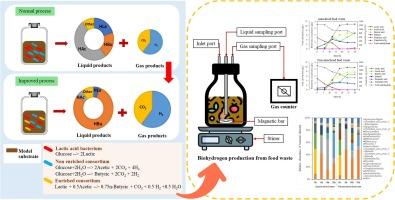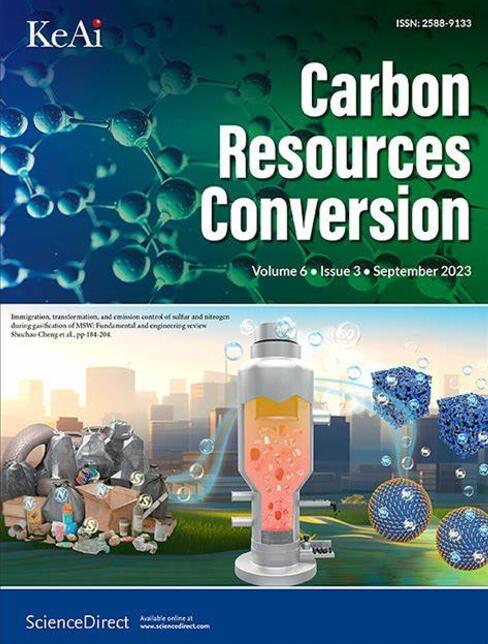利用乳酸发酵途径的富集产氢联合体提高乳酸菌污染底物的生物制氢能力
IF 7.5
3区 环境科学与生态学
Q2 ENERGY & FUELS
引用次数: 0
摘要
在有乳酸菌(LAB)存在的情况下,富集了乳酸发酵途径的产氢联合菌群,并将其与非富集的产氢联合菌群作为共同接种物用于生物制氢。与非富集联合菌群处理相比,共接种物处理取得了更优越的制氢性能。评估了富集菌群浓度、初始 pH 值和葡萄糖浓度的影响,在最佳条件下,产氢潜力(HP)为 1,605 ± 161 mL-H2/L,最大产氢率(HPR)为 87.17 ± 15.85 mL-H2/L.h。使用联合接种物从未经高温高压灭菌的食物垃圾中产生的生物氢为 1,137 mL-H2/L,相当于 56.85 mL-H2/g-VSadded。餐厨垃圾发酵过程中的代谢产物和微生物群落分析表明,产氢菌、酵母菌和产乙酸菌具有积极的交叉进食活性。这项研究为利用高效、富集的产氢联合体来提高受 LAB 污染的原料的生物制氢能力提供了宝贵的信息。本文章由计算机程序翻译,如有差异,请以英文原文为准。

Improved biohydrogen production from lactic acid bacteria contaminating substrates by enriched hydrogen-producing consortium with lactate-fermentation pathway
The hydrogen-producing consortium conveying the lactate-fermentation pathway was enriched and used as a co-inoculum with the non-enriched hydrogen-producing consortium for biohydrogen production in the presence of lactic acid bacteria (LAB). The co-inoculum treatment achieved superior hydrogen production performance compared to that of the non-enriched consortium treatment. The effects of enriched consortium concentration, initial pH, and glucose concentration were evaluated, and hydrogen production potential (HP) of 1,605 ± 161 mL-H2/L and a maximum hydrogen production rate (HPR) of 87.17 ± 15.85 mL-H2/L.h were achieved under optimal conditions. Biohydrogen production from food waste using the co-inoculum was 1,137 mL-H2/L from non-autoclaved food waste, corresponding to 56.85 mL-H2/g-VSadded. Metabolite product and microbial community analyses during food waste fermentation indicated positive cross-feeding activity of hydrogen producers, LAB, and acetogenic bacteria. This study provides valuable information on the use of an efficient, enriched hydrogen-producing consortium to improve biohydrogen production from LAB-contaminated feedstock.
求助全文
通过发布文献求助,成功后即可免费获取论文全文。
去求助
来源期刊

Carbon Resources Conversion
Materials Science-Materials Science (miscellaneous)
CiteScore
9.90
自引率
11.70%
发文量
36
审稿时长
10 weeks
期刊介绍:
Carbon Resources Conversion (CRC) publishes fundamental studies and industrial developments regarding relevant technologies aiming for the clean, efficient, value-added, and low-carbon utilization of carbon-containing resources as fuel for energy and as feedstock for materials or chemicals from, for example, fossil fuels, biomass, syngas, CO2, hydrocarbons, and organic wastes via physical, thermal, chemical, biological, and other technical methods. CRC also publishes scientific and engineering studies on resource characterization and pretreatment, carbon material innovation and production, clean technologies related to carbon resource conversion and utilization, and various process-supporting technologies, including on-line or off-line measurement and monitoring, modeling, simulations focused on safe and efficient process operation and control, and process and equipment optimization.
 求助内容:
求助内容: 应助结果提醒方式:
应助结果提醒方式:


